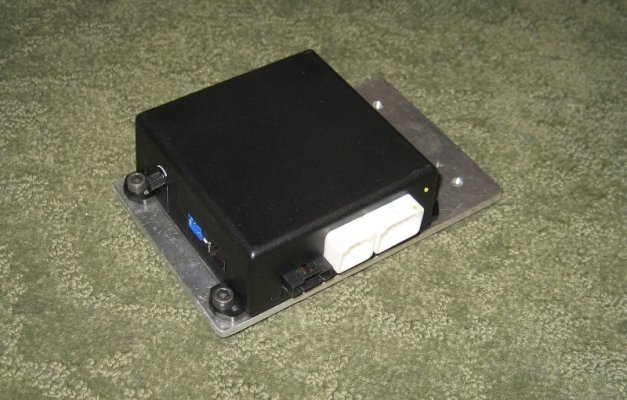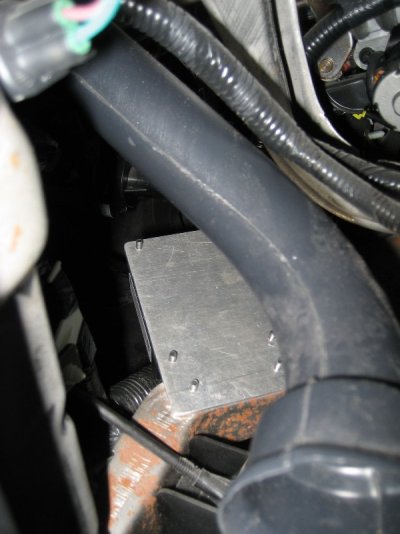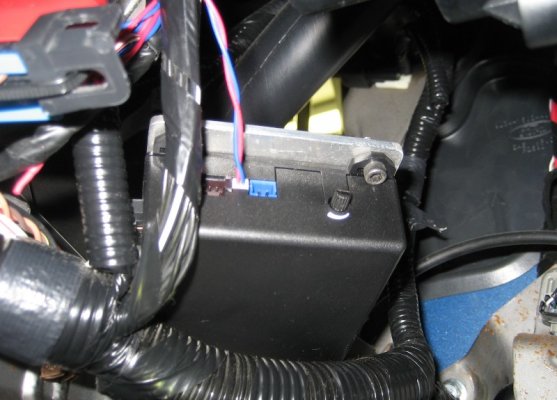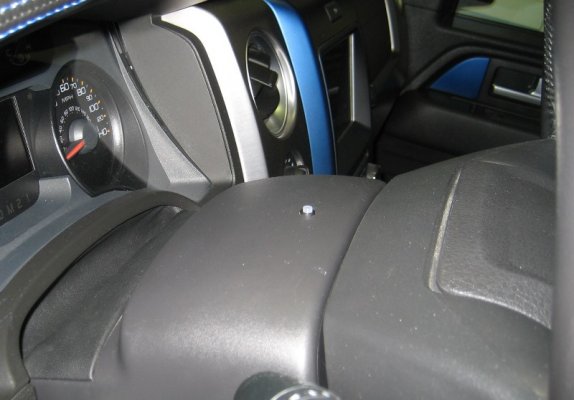Gary E
Full Access Member
Installed the Ford "Perimeter Plus Security System" which included the "Base Security Type A" (part number above) as well as the LED indicator light.
I didn't particularly like Fords instructions to tie wrap it to the door air duct. The air duct is not a solid surface to mount a shock sensor to.
I fabricated a mounting plate from 0.125" 6061-T6 aluminum and mounted the VSS with 8/32 allen cap screws threaded in. Also tapped the plate for 8/32 allen cap screws to mount to the steel instrument panel support which is below the air duct and has relatively easy access from underneath.

Drilled the steel dash support and mounted the VSS, both from underneath. The following view is from above thru the removed dash side panel.

Once mounted, the wire harness and LED was installed and zip tied out of the way. The following view is from underneath the instrument panel

I mounted the Ford LED in the steering column top cover as per the Ford instructions as it is very visible from both front door windows.

Notes: I had planned on utilizing 1 to 3 super bright (4000 mcd) T-1 3/4 LEDs in the top dash tray sides and back, since it has been reported that the Ford LED is not very bright. I tested the Ford LED at 3 volts and saw that it was plenty bright enough. But, when I measured the voltage output to the LED from the VSS, when the system is armed, the voltage was only 0.5 volts, hence the reason the LED is not very bright. Most LEDs operate in the 2 to 5 volt range for rated brightness. As a result, I abandoned the use of the super bright LEDs, utilized the Ford unit, and decided the top of the instrument panel was a sufficient location for it.
I also tested the two unused raw white wires that are in the wire harness coming from the VSS connector. Three tests with the system: armed, not armed, and shock activated, resulted is no measure of voltage. It has been reported that those two wires are for disabling the starter.
Like other installers, I have the sensitivity adjusted to about 3/4 of its maximum sensitivity range.
I didn't particularly like Fords instructions to tie wrap it to the door air duct. The air duct is not a solid surface to mount a shock sensor to.
I fabricated a mounting plate from 0.125" 6061-T6 aluminum and mounted the VSS with 8/32 allen cap screws threaded in. Also tapped the plate for 8/32 allen cap screws to mount to the steel instrument panel support which is below the air duct and has relatively easy access from underneath.

Drilled the steel dash support and mounted the VSS, both from underneath. The following view is from above thru the removed dash side panel.

Once mounted, the wire harness and LED was installed and zip tied out of the way. The following view is from underneath the instrument panel

I mounted the Ford LED in the steering column top cover as per the Ford instructions as it is very visible from both front door windows.

Notes: I had planned on utilizing 1 to 3 super bright (4000 mcd) T-1 3/4 LEDs in the top dash tray sides and back, since it has been reported that the Ford LED is not very bright. I tested the Ford LED at 3 volts and saw that it was plenty bright enough. But, when I measured the voltage output to the LED from the VSS, when the system is armed, the voltage was only 0.5 volts, hence the reason the LED is not very bright. Most LEDs operate in the 2 to 5 volt range for rated brightness. As a result, I abandoned the use of the super bright LEDs, utilized the Ford unit, and decided the top of the instrument panel was a sufficient location for it.
I also tested the two unused raw white wires that are in the wire harness coming from the VSS connector. Three tests with the system: armed, not armed, and shock activated, resulted is no measure of voltage. It has been reported that those two wires are for disabling the starter.
Like other installers, I have the sensitivity adjusted to about 3/4 of its maximum sensitivity range.

